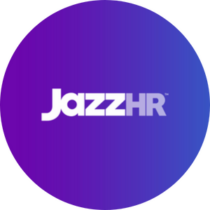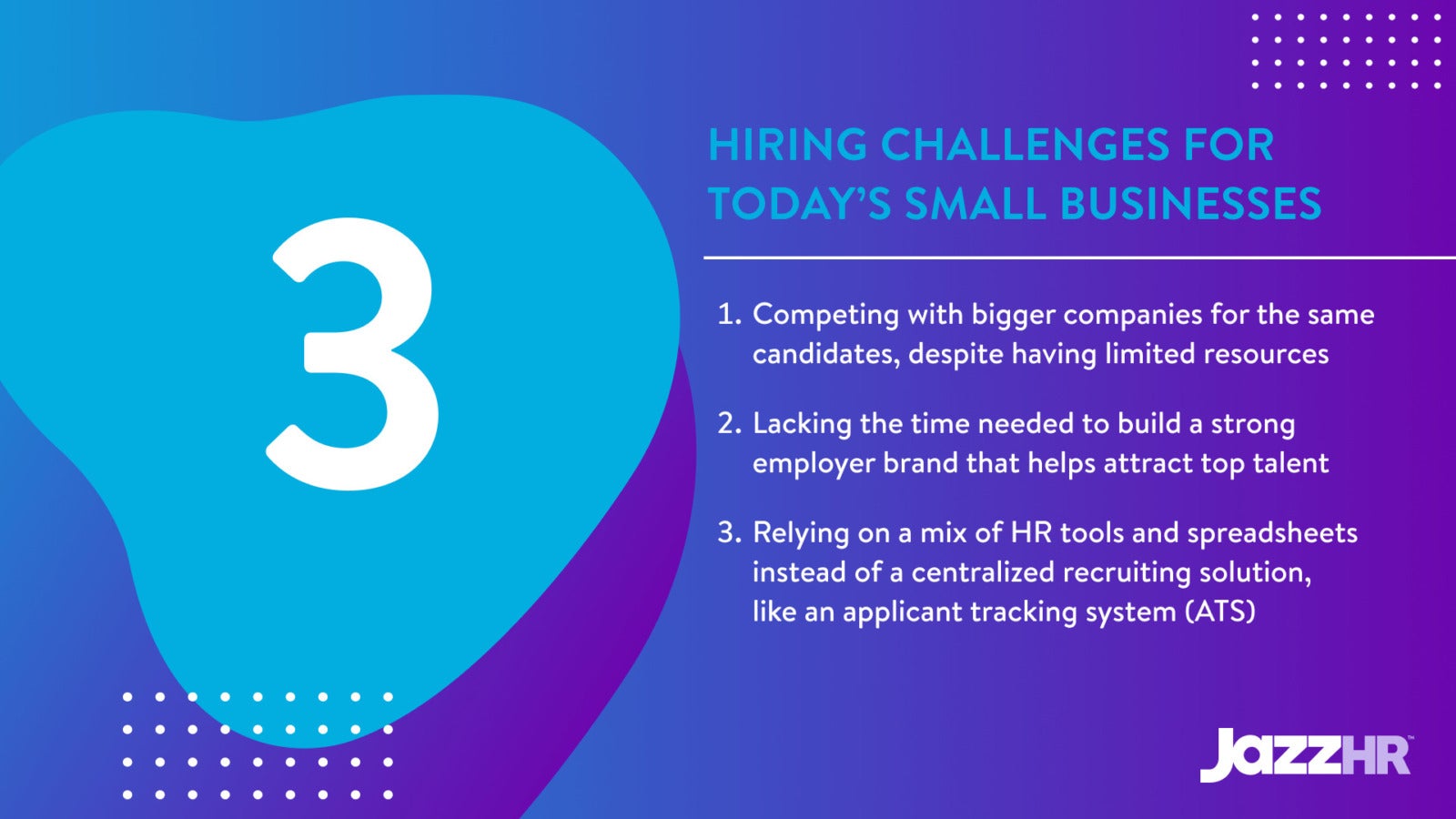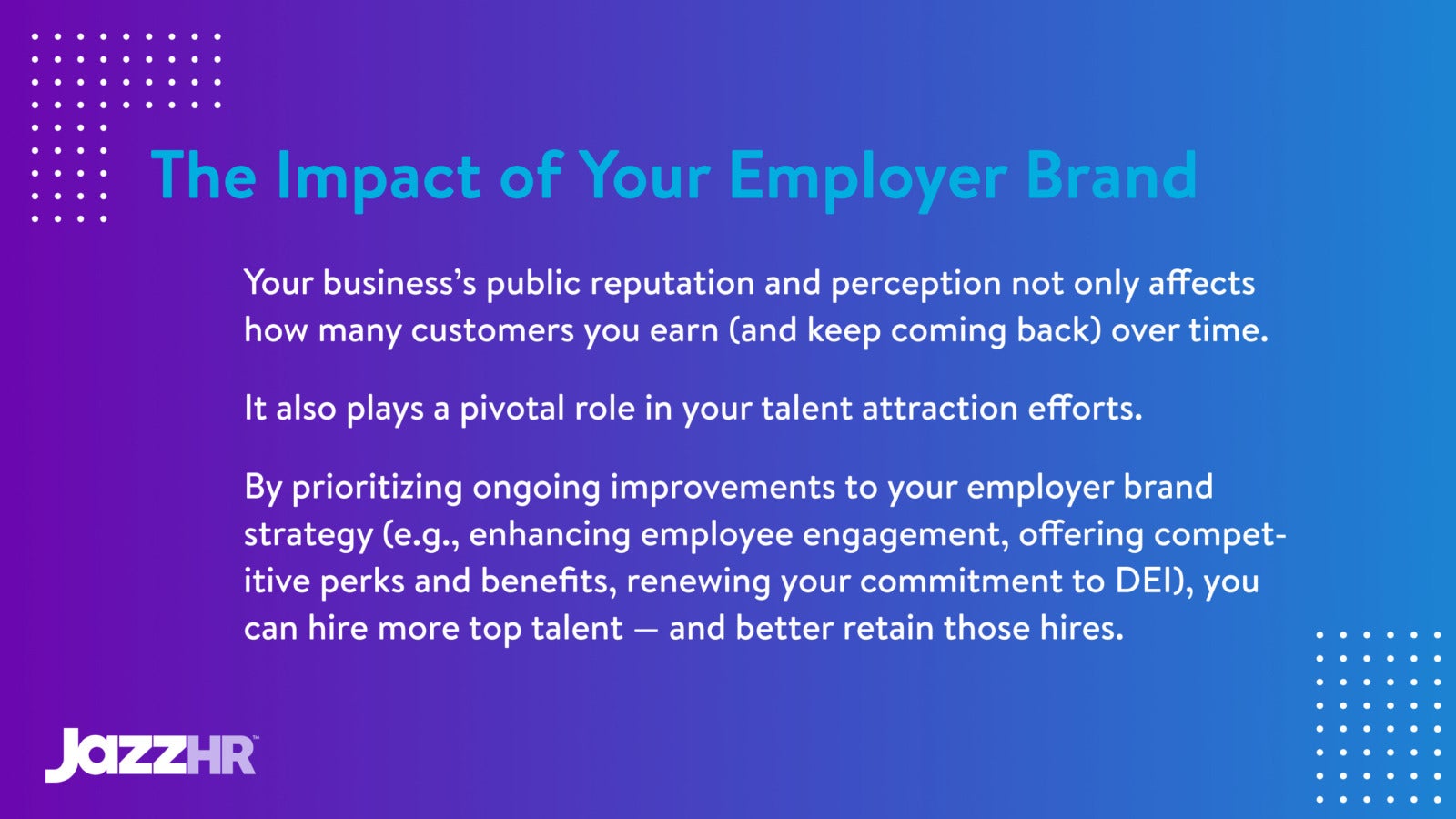
The Top Recruiting and Hiring Challenges SMBs Face Today
While hiring challenges exist for organizations of all sizes, small businesses have some of the biggest recruiting obstacles to overcome. With limited hiring resources and budgets, SMBs have to tackle competing priorities and decisions of where and when to invest in hiring for their business.
And yet, small businesses must fill critical roles with qualified candidates to improve their daily operations and grow their companies long term. This means addressing their recruitment challenges head on and with the right technology and processes to improve their hiring outcomes.
3 recruiting and hiring challenges small businesses face today
The U.S. Jobs & Hiring Trends Report from Indeed makes the case for cautious optimism in the labor market for employers, based on a stronger economic outlook for the year ahead.
Yet, even with the potential for better hiring conditions in 2024 and beyond, there are recruiting challenges SMBs must contend with near term to hire workers that will drive business results.
Here are three specific hiring challenges many SMBs are dealing with today and solutions that can help them address the issues so they can better attract, engage, and hire top talent.
1) Competing with bigger companies for top talent
The 2023 Employ Recruiter Nation Report found 63% of small businesses cited a lack of qualified candidates in their talent pool as one of their main recruiting and hiring challenges today.
Talent scarcity even requires that some SMBs look abroad for employees.
- Recent Gusto research found 58% of small business owners are “turning to international talent because they’re facing a shortage of available U.S. employees, or because they need additional skills they can’t find in the U.S.”
One reason many small businesses don’t have enough high-quality candidates they can engage for open roles is larger companies are competing for the same talent.
These bigger businesses often win more qualified candidates over SMBs because they have:
- More money to spend on recruitment marketing activities, like targeted job ads
- More recruiters and hiring managers who can tackle recruiting tasks
- More hiring team members who can spend most or all their time reporting on hiring challenges, strengths, and opportunities and help improve the company’s recruiting process
Mineral’s 2023 State of HR report found 57% of small business HR teams said attracting new employees was one of their top business priorities today. That makes it critical for SMBs to find a way to connect with potential candidates and show why their company is worth joining over a larger employer.
Solution: Create a strong company culture that appeals to candidates.
Pay, benefits, time off, and work flexibility matter to many job seekers today. But, many people also want to work for companies with company cultures that foster a sense of purpose and community.
“Creating a sense of connection is crucial for small businesses that want to attract competitive talent,” LaunchCode Interim Executive Director Sarah Mayer wrote for Entrepreneur.
- Learn what your current employees love about your company culture and what they’d improve.
Then, use their feedback to enhance your culture and feature messaging around your improvements in your job descriptions, career site copy, candidate outreach, and social media posts.
2) Lacking time and resources to build a strong employer brand
Another top recruitment challenge small businesses face is having enough bandwidth and resources for creating a memorable and compelling employer brand.
- Remember: Employer branding is basically storytelling.
The better you tell your small business’s story on your website and in other promotions, the better your chances are of getting more customers to buy from you and candidates to apply for open roles.
Your dedicated human resource professional or team has a lot to manage daily. From overseeing payroll and HR-related issues to onboarding new employees to ensuring compliance with workplace laws, investing in employer brand initiatives often can seem like the lowest priority.
That said, showing why your business is a great place to work is one of the most effective ways that your business can attract higher potential candidates and driving hiring efficiencies for your company.
Solution: Get insights and ideas from employees and other SMBs.
While talking to your employees about what makes your company culture unique, ask them how they perceive your small business and what makes them want to stay at the company long term.
Survey employees to reveal what makes working at your company great, get their thoughts on your company mission and values, and discover areas of the business where they think there is room for improvement.
- “If you create exceptional employee experiences first and lean into that, that will allow the employee voice to sing and influence successful recruiting,” Glassdoor Head Strategist, Employer Brand & Voice Taylor Meadows noted at an Indeed FutureWorks event.
At the same time as speaking with employees, research what other small businesses with similar products and/or services as yours are doing to position their companies as the best in your space.
Let’s say a competitor does an excellent job explaining their progress with diversity, equity, and inclusion (DEI) efforts and spotlighting their volunteer and charity work on their website in a compelling manner.
Consider featuring your community outreach and DEI initiatives on your site and asking some employees who take part in your volunteer work and DEI programs to share their experiences for testimonials.
3) Relying on too many HR tools to recruit and hire candidates
One of the toughest hiring challenges for SMBs today isn’t related to personnel or processes. Rather, it has to do with the assortment of tools they are forced to use to track and engage candidates.
The most common hiring technology stack for small businesses today is built around their spreadsheets and email. This kind of disjointed setup leads to inefficient recruiting and slow hiring processes.
Solution: Use an applicant tracking system to streamline hiring.
Applicant tracking systems (ATS) are “morphing from archaic resume repositories into intuitive, end-to-end recruitment management tools that are more friend than foe in helping recruiters achieve their goals,” HR technology expert Dave Zielinski wrote for SHRM.
An ATS built for SMBs can help your hiring team:
- More quickly and efficiently publish your job postings
- Connect with qualified candidates in your talent pool
- Manage all active and passive job seekers from one location
- Get rid of unconscious biases in candidate evaluation
- Send and evaluate scores of pre-employment assessments
- Improve collaboration across the recruiting life cycle
- Report on your talent sourcing and candidate engagement
- Gather feedback from candidates and interviewers
- Organize and streamline your entire hiring process
With the right ATS for small businesses, you can stop relying on disconnected tools and your inbox to execute your recruiting strategy and more efficiently connect with and hire top talent.
Get more active job seekers to apply and better engage passive candidates with JazzHR’s small business recruitment software. Schedule a demo of our SMB applicant tracking system today.









